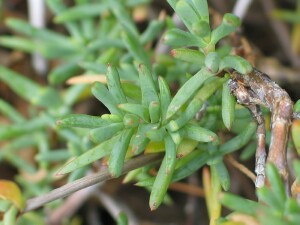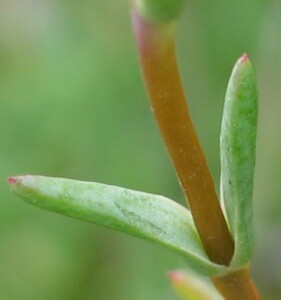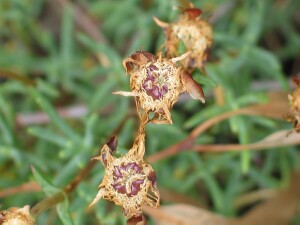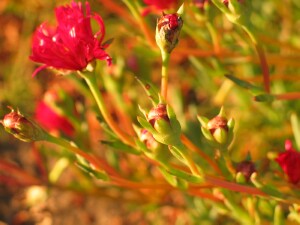Little Noon-flower
Back | Salinity Indicator Plants Home | Common name home | Scientific name home | Photo Gallery | Glossary
| Little Noon-flower photos |
| Scientific Name: | Lampranthus tegens | 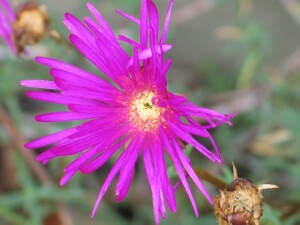 Flower of garden Lampranthas sp. Photo: A J Brown | |||||
Status: | Native to South Africa. | ||||||
Plant Description: | Trailing to erect perennials which root at stem nodes. Branches and leaves are often red-dotted. Leaves are circular to triangular in cross-section, linear or slightly incurved at the apex, 1-2 cm long and 1-3 mm wide and often glaucous (blue-green with a whitish bloom). Flowers are at the ends of stems and have 5 bracts (sepals) about 4 mm long and much shorter than the pink to purple narrow (1 mm) staminodes (petal-like sterile stamens). Fruit is a capsule with 5 parts and partly covered by an elastic membrane. | ||||||
Habitat: | Naturalised in New South Wales and Victoria where only known from the shores of Port Phillip Bay and growing in saltmarsh. However, Lampranthus species are widely grown garden plants and escapees may occur.
| ||||||
Comments: | Lampranthus is a large genus with about 180 species, a number of which are garden plants, including Trailing Ice Plant (L. spectabilis) and Golden Ice Plant (L. aureus). Species naturalised in other States include Creeping Redflush (L. multiradiatus) in New South Wales and Yellow Ice Plant (L. glaucus) in Western Australia. For Pigfaces naturalised in Victoria, see Key to Pigfaces and similar plants. |
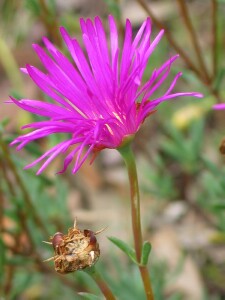 Flower of garden Lampranthas sp. Photo: A J Brown | 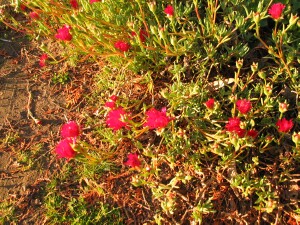 Red flowering buds of garden form of garden Lampranthas sp Photo: A J Brown |
|
|
|
|

